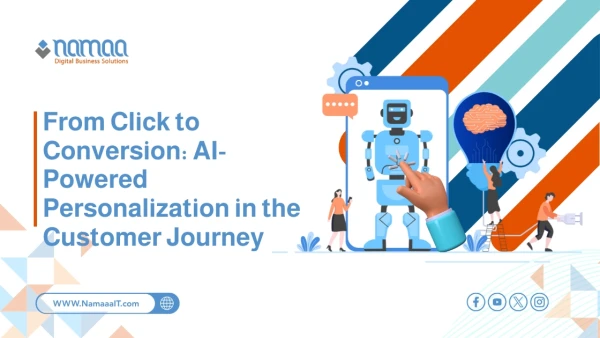Artificial Intelligence Programming: Unlocking the Power of Smart Systems
Artificial intelligence (AI) programming is fundamental to developing systems capable of mimicking human intelligence, opening wide horizons across various fields. AI is a technology that provides human-like problem-solving capabilities. Through AI programming, systems can be developed to learn from data, recognize patterns, and make informed decisions. Applications of AI range from digital assistants we interact with daily to advanced systems used in healthcare, manufacturing, and entertainment. These systems rely on complex algorithms and machine learning techniques that allow machines to improve their performance over time.
In this article, we will explore the core principles of AI programming, highlight the most common programming languages used in this field, and examine real-world applications that are revolutionizing multiple industries.
Fundamental Concepts in Artificial Intelligence
Artificial intelligence (AI) encompasses fields like Machine Learning (ML) and Deep Learning (DL). Machine learning is a subset of AI that enables systems to learn patterns from data and build knowledge without explicit manual programming. According to Gartner, corporate investment in AI was projected to reach $62.5 billion by 2022, with a large share allocated to machine learning technologies.
Deep learning, an evolution of machine learning, focuses on using multi-layered neural networks, allowing machines to process more complex information such as images and videos. Market forecasts estimate that the deep learning market will reach $23.4 billion by 2025, with increasing use in image recognition, speech recognition, and machine translation.
The ability to learn patterns and extract knowledge from big data is a critical component of the current technological evolution. These concepts are being applied across a wide range of industries—from healthcare to finance and transportation—making them key drivers of global innovation.
The Importance of AI Programming
AI programming is one of the most vital technical fields in the modern era. It plays a pivotal role in developing systems capable of making intelligent, data-driven decisions. AI programming enables the development of applications that learn from their environment and continuously improve their performance.
According to a report by McKinsey & Company, AI technologies are expected to contribute approximately $13 trillion to the global economy by 2030, reflecting the massive impact of these technologies on how businesses operate across sectors.
AI programming is crucial for enhancing efficiency and reducing costs in many industries. For instance, companies like Amazon use AI in their delivery and warehousing systems to boost efficiency and shorten order fulfillment time. In healthcare, AI systems assist in diagnosing diseases faster and more accurately, improving the lives of millions. In the automotive world, AI programming powers the development of self-driving cars—expected to be among the most transformative innovations in the near future.
read more: Artificial Intelligence Applications in E-commerce
Programming Languages Used in AI Development
Various programming languages can be used to develop AI systems, with some more commonly used due to their power and flexibility. The most prominent languages include Python, Java, and R.
Python is the most widely used language in AI due to its powerful libraries and tools such as TensorFlow, Keras, and PyTorch, which simplify the process of building and training intelligent models. According to a recent Stack Overflow survey, 57% of AI developers prefer Python.
Java is a strong and versatile language often used in building enterprise-level AI applications. Many developers use Java because it works across multiple platforms and has dedicated libraries like Deeplearning4j. R is particularly favored in data analysis and statistics, offering an ideal environment for handling large datasets. Statistics show that R is especially popular in academic circles and in fields involving data visualization and machine learning.
Current trends indicate that the use of languages like Python continues to grow, with rising demand for skilled developers in these foundational tools for advanced AI technologies.
Popular Frameworks and Libraries in AI Programming
Frameworks and libraries play a major role in accelerating the development of AI software. These tools provide developers with a complete work environment and a set of ready-made functionalities that speed up development and reduce programming complexity.
One of the most well-known tools is TensorFlow, developed by Google. TensorFlow is highly flexible in building deep neural networks and is used in various applications such as image and voice recognition. Statistics indicate that TensorFlow is used in over 50% of AI projects worldwide.
Other prominent frameworks include Keras and PyTorch. Keras is a high-level interface for TensorFlow, making it easier to build machine learning and deep learning models. PyTorch, on the other hand, is valued for its flexibility and ease of use in academic research, with many researchers using it for image and video recognition. According to the "GitHub 2021" report, PyTorch was the fastest-growing AI library in recent years.
These frameworks and libraries form the backbone of many leading AI applications and are expected to continue evolving as demand grows for more advanced AI technologies.
Explore: Uses of Artificial Intelligence
The Role of AI Programming in Modern Application Development
AI programming is a driving force behind the development of modern applications across different industries. It allows systems to learn from data, enhancing their ability to make smart decisions and improve performance over time.
For example, major companies like Amazon and Google rely on AI to build recommendation systems that suggest products or content tailored to user interests. Studies show that 35% of Amazon's sales come directly from AI-powered recommendations. AI has also become an integral part of enhancing user experiences in mobile applications, where it is used to analyze user behavior and provide personalized experiences.
In healthcare, AI programming supports the development of diagnostic applications that help doctors detect diseases like cancer at early stages, increasing the chances of effective treatment. A report by The Lancet indicates that AI can help reduce medical errors by up to 30%. The development of intelligent transport applications, such as self-driving cars, further highlights the growing role of AI in everyday life. By improving the capabilities of current applications, AI has become indispensable in shaping the digital future and continuously improving human life.
Real-Life Examples of AI Programming in Daily Life
AI programming is a core component of many technologies we use daily—often without realizing it. For example, smart assistants like Siri and Alexa use AI to understand voice commands and interact with users naturally. A 2020 study by Statista found that voice assistant users had reached 4.2 billion people worldwide, reflecting the widespread adoption of this technology.

.webp)



.webp)



